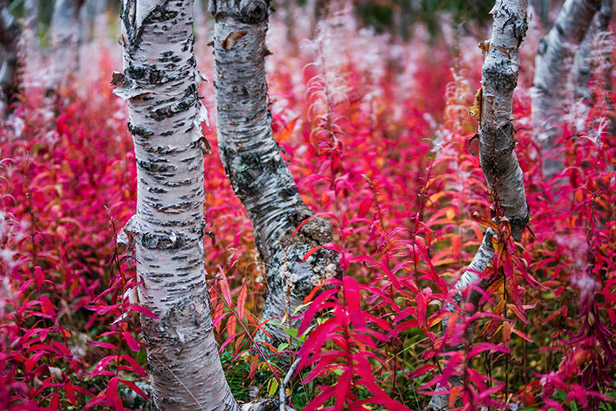

The Khibiny Mountains are a small mass of mountains in the central part of the Kola Peninsula located within the Russian Arctic Circle. It's unique for its geological formation and relief. The largest number of rare plant species in the Murmansk region have been discovered here. Thickets of dwarf birch, shrubs, mosses and lichens abound in the mountains' valleys.
Alexandr Ermolitsky
The nearest cities are located at the foot of the mountains: Apatity (1,715 km from Moscow, the fifth most populous city in the Russian Arctic Circle) and Kirovsk.
Alexandr Ermolitsky
The Kola Peninsula's Khibiny Mountains are relatively young; they are "only" 350,000,000 years old. They are also relatively small, only 1200 meters high at the peak of Yudychvumchorr, although they are still "growing" by a few millimeters per year.
Alexandr Ermolitsky
It's known that when the Khibiny Mountains were being explored, the Sami - the indigenous people of the Kola Peninsula'- came here only in the summer. According to a Sami legend, the evil spirit of the Khibny punished those who invaded its domain. This is how the Sami poeticized the dangerous avalanches in the mountains that continue to this day.
Alexandr Ermolitsky
The renown mineralogist Alexander Fersman led the exploration of the Khibny. He was a geologist for the Northern Scientific Trade Expedition that set out to the Kola Peninsula in March 1920.
Alexandr Ermolitsky
Fersman was interested in the forms of minerals found on the mountain slope. He had never seen any like them before. These minerals are called 'khibinites' in honor of the mountains.
Alexandr Ermolitsky
During the summer months, only mountain climbers and hiking enthusiasts come to the Khibny. The summer in the Arctic Circle is short and fairly cool. In mid-summer, the temperature here is approximately 13 degrees.
Alexandr Ermolitsky
After apatites—more precisely the largest source of apatite and nephelometer ores in the world—were discovered in the Khibiny Mountains, progress came to the Kola Peninsula. Mines appeared along with the town of Khibingorsk. A little later, the mines were complemented by a concentrator where the minerals were processed.
Alexandr Ermolitsky
Many of the plants that grow in the Khibiny Massif have a practical and economic purpose. At the end of July-beginning of August, a large amount of berries are gathered: cloudberries, crowberries, bilberries, and blueberries. At the beginning of September, lingonberries are collected.
Alexandr Ermolitsky
The forests also contain mountain ash and stone bramble, while cranberries can be found in the swamps.
Alexandr Ermolitsky
A belt of coniferous and mixed forests is located in the base of the valley at the foot of the mountain slopes, and don't reach higher than 470 meters above sea level. The forest belt covers almost one third of the massif. Fir and birch forests are the most characteristic element of the Khibiny Mountains. / Stone birches and willow-herb.
Alexandr Ermolitsky
The Khibiny Mountain range's flora is its most precious treasure. In the territory examined here, a large number of species of different ranks included in so-called red books of endangered species were discovered. More than half of all the rare species known in this region grow here.
Alexandr ErmolitskyAll rights reserved by Rossiyskaya Gazeta.
Subscribe
to our newsletter!
Get the week's best stories straight to your inbox